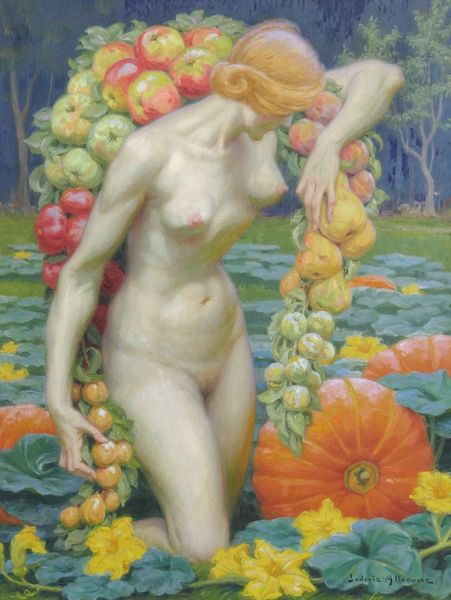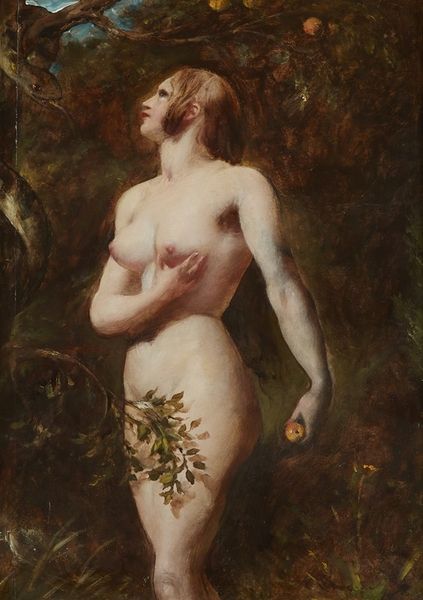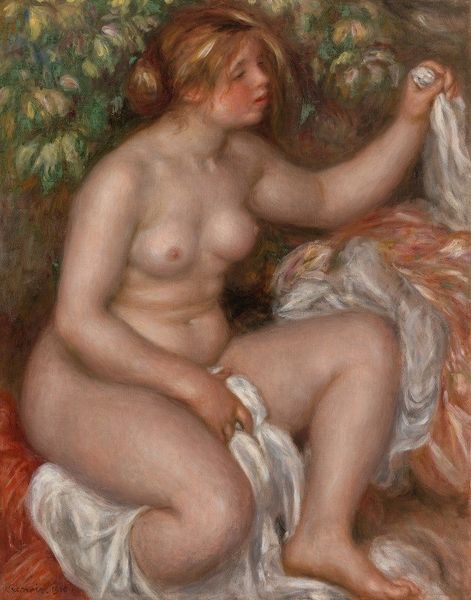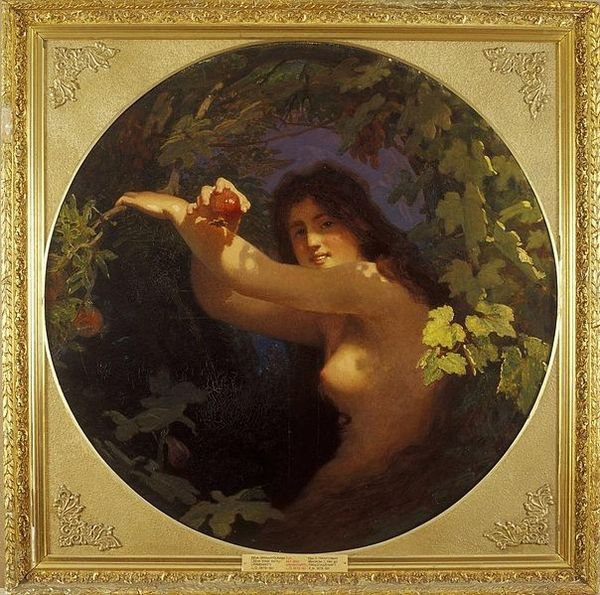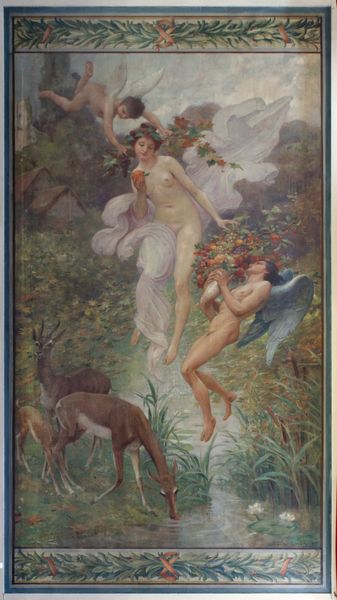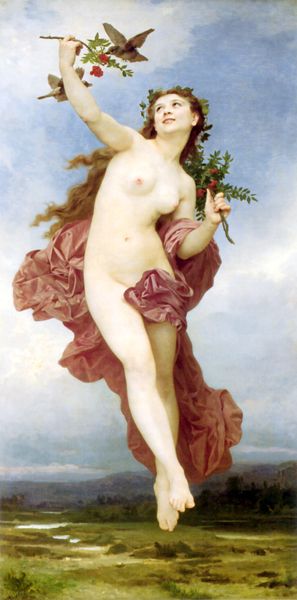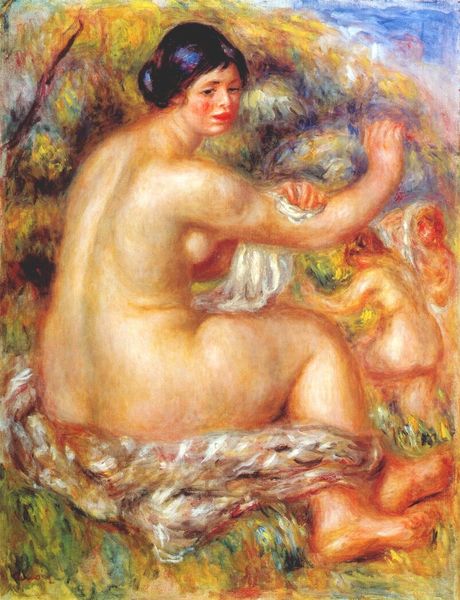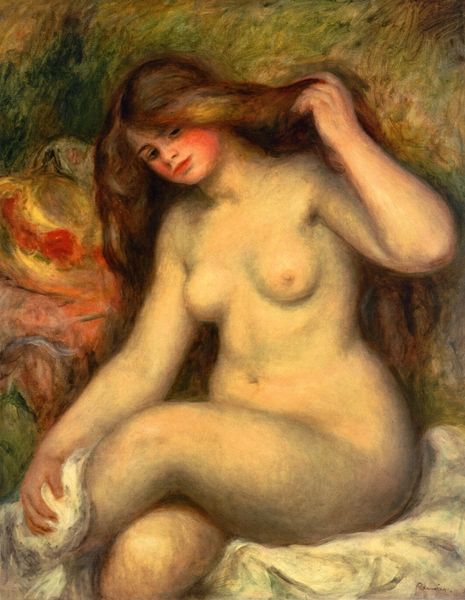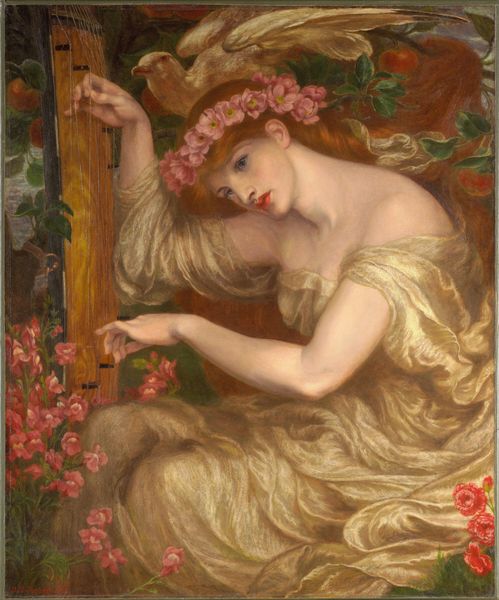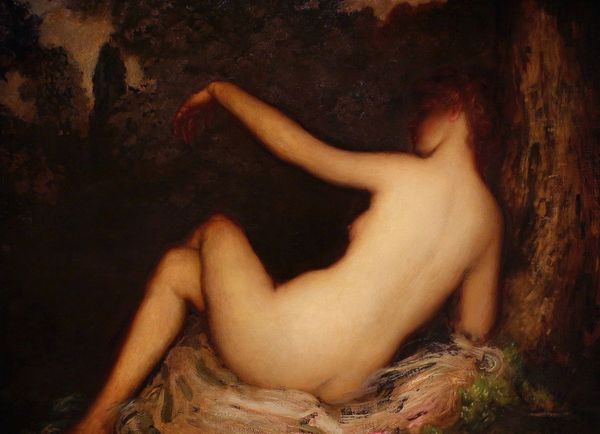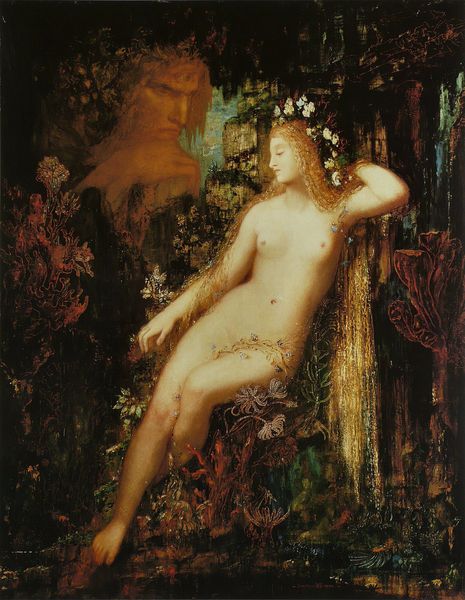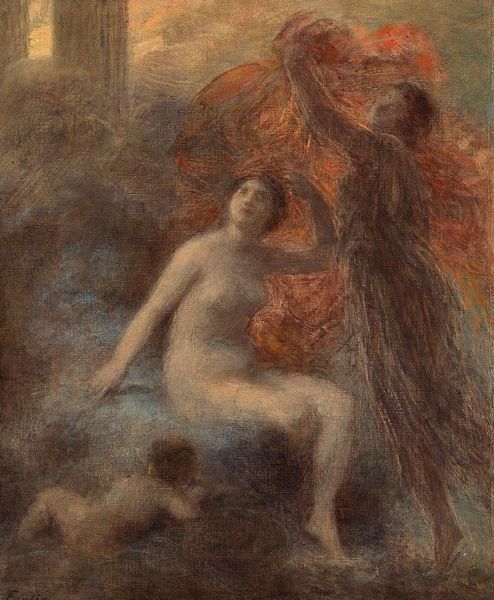
Dimensions: support: 2578 x 1168 mm
Copyright: CC-BY-NC-ND 4.0 DEED, Photo: Tate
Editor: This is George Frederic Watts's painting, "Eve Tempted," currently residing at the Tate. Its monumental scale immediately draws you in. What do you see in this depiction, especially considering the prevailing views on women at the time? Curator: Watts presents Eve at a pivotal moment, but the lens through which we view this moment is crucial. How does the male gaze, prevalent in Victorian art, shape our understanding of Eve's agency, or lack thereof? Consider the symbolism of the serpent, often linked to female sexuality and deceit. Editor: So, it's not just about the biblical story, but also about the social commentary? Curator: Precisely. Watts's work becomes a space to interrogate the Victorian construction of femininity, morality, and the consequences of female desire within a patriarchal framework. It’s about power, representation, and the enduring legacy of these narratives. Editor: That gives me a lot to think about. Thanks!
Comments
Join the conversation
Join millions of artists and users on Artera today and experience the ultimate creative platform.
tate 6 months ago
⋮
Watts called these three paintings The Eve Trilogy. They represent Eve’s ascension to life, her temptation and her grief after her downfall. In her temptation she is shown greedily entwined with the apple tree. The dissolving forms of the central work correspond to the idea of Eve rising up in an explosion of light and colour. By contrast, the heaviness of flesh in the final work suggests her burden of sin and guilt. Gallery label, July 2007
